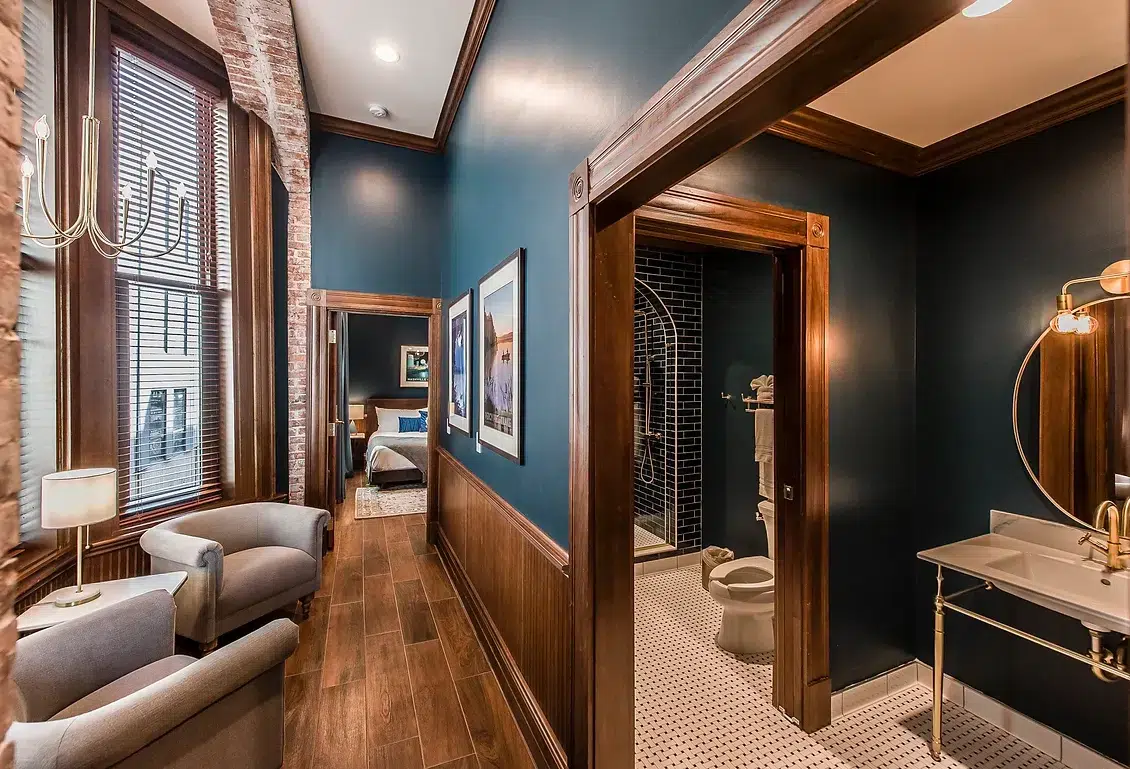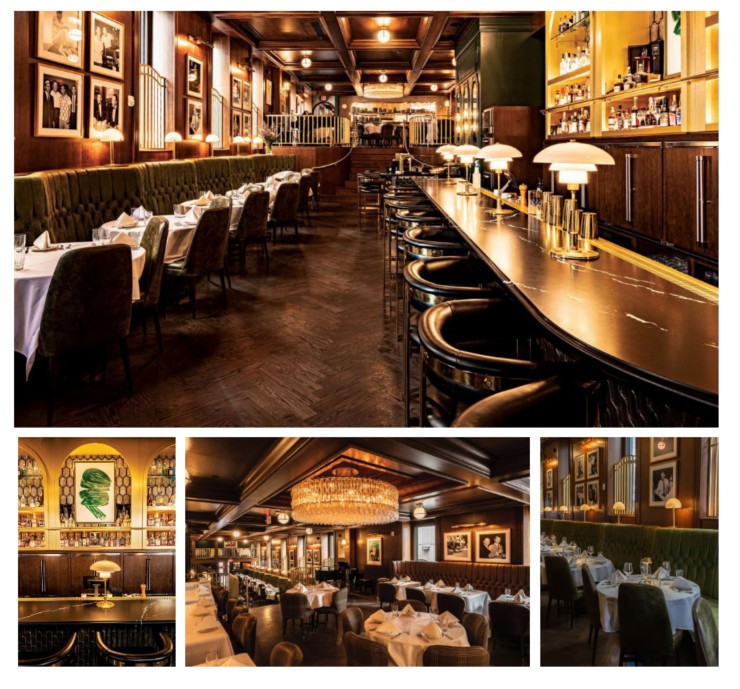Adaptive Reuse in Nashville’s Hospitality Scene: The Architecture of History Preservation
Preserving Nashville’s Architectural Heritage
Nashville’s skyline tells a story of musical heritage and historical significance through its diverse architectural landscape. From Victorian-era buildings in Germantown to the industrial warehouses of Gulch, the city presents a living museum of American architectural evolution.
These structures don’t merely represent different eras; they embody Nashville’s cultural journey from a riverside trading post to the vibrant music capital it is today. Each brick, beam, and facade carries stories that connect visitors to the authentic spirit of Music City.
Historic Settings Create Unique Guest Experiences
Today’s travelers are increasingly drawn to spaces that offer more than just comfort—they crave connection. Historic buildings transformed into hospitality venues provide an authenticity that new constructions simply cannot replicate.
Guests are looking for immersive experiences that transport them beyond the ordinary, allowing them to feel part of a location’s ongoing narrative. The patina of age, the unique architectural details, and the sense of permanence in historic buildings create emotional resonance that creates lasting impressions and fosters a deeper connection to Nashville’s cultural identity.
Beyond preserving cultural heritage, adaptive reuse represents a significantly more sustainable approach to development. Repurposing existing structures dramatically reduces construction waste, conserves embodied energy, and minimizes the carbon footprint associated with new building materials.
In Nashville’s rapidly developing hospitality sector, adaptive reuse offers an environmentally responsible alternative that aligns with growing consumer preferences for sustainability while preserving the distinctive character that makes the city unique.
Balancing Preservation with Modern Hospitality Requirements
Identifying Historical Elements Worth Preserving
Successful adaptive reuse begins with a thorough assessment to identify which historical elements tell the most compelling story. Original hardwood floors, exposed brick walls, industrial windows, and architectural details like ornate moldings often represent the soul of historic buildings.
The challenge lies in determining which elements contribute meaningfully to the narrative and which can be respectfully altered to accommodate new functions. This careful curation process ensures that what remains truly enhances the guest experience rather than merely serving as decorative backdrop.
Integrating Modern Amenities Without Compromising Character
The art of adaptive reuse in hospitality lies in seamlessly introducing modern comforts without disrupting historical integrity. Strategic interventions—such as concealing technology within historical elements or using thoughtful lighting to highlight original architecture—create spaces that respect the past while meeting contemporary expectations. The goal is to make modern amenities feel like natural extensions of the building’s evolution rather than intrusive additions, preserving the authentic experience while delivering modern conveniences today’s guests expect..
Historic buildings weren’t designed with modern hospitality operations in mind, presenting unique challenges for service flow and back-of-house functions. Creative spatial planning becomes essential, often requiring innovative solutions to accommodate kitchen requirements, staff circulation, and support spaces without compromising guest areas. The most successful adaptations find ways to make operational efficiency invisible to guests while preserving the authentic character that makes the property special.
Design Strategies for Successful Adaptive Reuse
Honoring Original Architecture Through Thoughtful Contrast
Rather than attempting to mimic historical styles, the most compelling adaptive reuse projects create respectful dialogue between old and new. Introducing contemporary elements that clearly distinguish themselves from original features creates a visual timeline that celebrates both the building’s history and its evolution. This approach of intentional contrast highlights historical elements by providing visual breathing room, allowing guests to clearly distinguish between different chapters in the building’s story.
Repurposing Historical Elements in Functional Ways
Transforming historical artifacts into functional features creates powerful connections to a building’s past. Factory equipment reimagined as lighting fixtures, freight elevators converted to private dining spaces, or loading docks transformed into outdoor terraces all maintain authentic connections to a structure’s history while serving contemporary needs. These creative adaptations preserve industrial heritage while creating distinctive experiences that can’t be replicated in new construction.
The most memorable adaptive reuse projects weave cohesive narratives throughout the guest experience. By understanding a building’s historical context—whether it was previously a printing press, textile mill, or warehouse—designers can develop conceptual frameworks that inform everything from spatial organization to material selections and custom details.
Navigating Regulatory Considerations in Nashville
Working With Preservation Authorities
Successful adaptive reuse projects in Nashville require early and ongoing engagement with preservation authorities. Establishing collaborative relationships with organizations like the Metropolitan Historical Commission facilitates productive dialogue about appropriate interventions. By demonstrating respect for historical significance while clearly articulating the necessity of certain modifications, designers can navigate these relationships more effectively and develop solutions that satisfy preservation goals while enabling viable hospitality operations.
Building Code Compliance in Historic Structures
Historic buildings present unique challenges in meeting current building codes, particularly regarding accessibility, fire safety, and structural requirements. Creative compliance strategies often involve working closely with code officials to develop alternative solutions that achieve safety objectives without compromising historical integrity. This collaborative approach helps identify compliance pathways that respect both the letter and spirit of regulations while preserving architectural heritage.
Marketing Advantages of Historically Significant Properties
Properties with authentic historical narratives enjoy significant marketing advantages in today’s experience-focused hospitality landscape. Historic buildings come with built-in unique features and interesting stories that make marketing them easier. In this way, the building’s character and history do some of your marketing work for you, creating natural talking points that attract interest.
Operational Benefits of Well-Executed Historic Conversions
Though initial adaptation costs may exceed new construction, thoughtfully executed historic conversions often deliver operational advantages through higher average daily rates, improved occupancy, and enhanced food and beverage performance.
Guests typically demonstrate greater willingness to pay premium rates for authentic experiences in unique historical settings, creating opportunities for increased revenue across all operational departments.
Beyond immediate financial performance, adaptive reuse creates lasting value by preserving irreplaceable architectural assets. Properties that maintain authentic connections to their history tend to age more gracefully than trend-focused new developments, allowing them to remain relevant and compelling across decades rather than a few years. This timelessness translates to sustained competitive advantage and long-term asset appreciation that benefits owners and the broader community.
Adaptive Reuse Creates Future-Focused Spaces That Honor the Past
Successful adaptive reuse in Nashville’s hospitality landscape balances reverence for history with vision for the future. By thoughtfully preserving architectural heritage while creating functional, operationally efficient spaces, designers can craft hospitality experiences that connect guests to Nashville’s rich past while meeting contemporary expectations.
These projects don’t just preserve buildings—they breathe new life into historical narratives, creating spaces where authentic connections flourish and where Nashville’s architectural heritage continues to evolve rather than disappear. Through this intentional approach to adaptive reuse, we can ensure that the city’s most distinctive buildings remain vital parts of its cultural landscape for generations to come.

